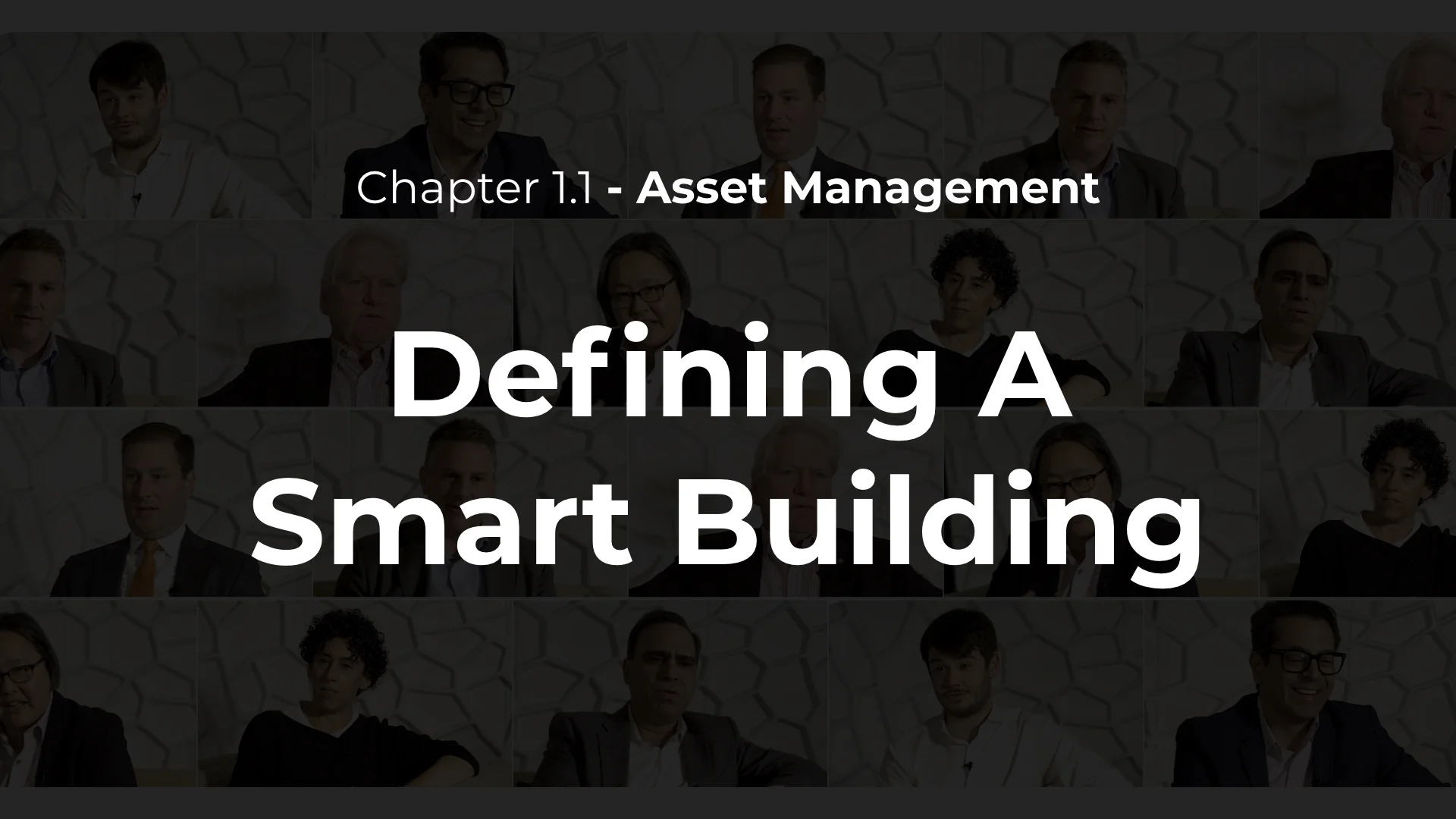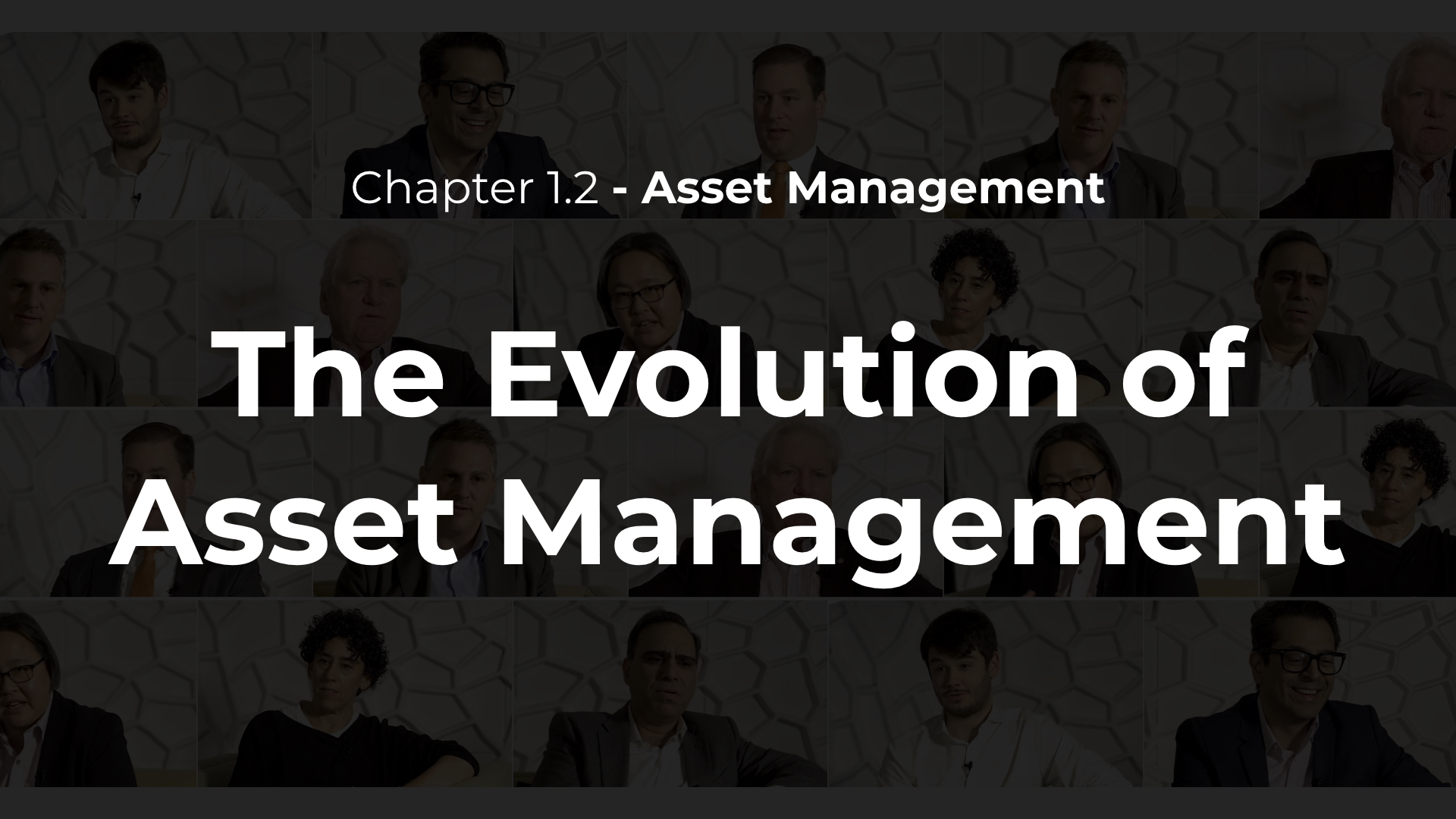Inside CRE Tech • Episode 1.1
Defining A Smart Building
VIDEO TRANSCRIPT:
Jack Sibley, Technology & Innovation Strategies, TH Real Estate
How do you define a smart building?
John Gilbert, EVP, COO, CTO, Rudin Management
How do you define a smart building?
Kent Tarrach, VP, Asset Management & Global Corporate Development, Brookfield
Defining a smart building is very challenging because at last count I think there's been at least a dozen different definitions for what a smart building is and no one seems to be in full agreement of what that is.
Gabrielle Rubin Deveaux, Global Real Estate & Facilities, Buzzfeed
My first thought as to what a smart building is would be a lot of technology involved with it. But as someone who has a building that has destination dispatch elevators it's not always a better way to go. Sometimes things are better as analog than digital.
Adam Stoltz, National Director, Consulting Services - Transwestern
Well it smart building certainly doesn't describe sort of every facet, I think, well enough for at least the word “smart” may not describe it well enough.
Raj Bhatti, CIO, NGKF
Well there's the obvious classic definition.
Tama Huang, Chief Innovation Officer, CohnReznick
I think that what we have today are connected buildings. Buildings that have some layer of censoring so they're able to inform. So at the most fundamental level you have connected place that is just something is censoring and talking to you.
Jack Sibley, Technology & Innovation Strategies, TH Real Estate
So the classic answer is that it's not just about thing one piece of technology into building. It's more about how do you connect all of your systems together or at least how you can connect lots of them together. And really drive that I suppose integration and into operationality of the whole building.
Adam Stoltz, National Director, Consulting Services - Transwestern
Similarly to the way that we think about smartphones. We don't really talk about them in that way. We should expect them to do things that are important to us and that help solve for our our needs.
Hussain Ali-Khan, Global Alliance Director, CBRE
I think a smart building is like this giant umbrella concept which fits a whole bunch of different things right. And I think that just the the vision of the smart building is something that is delivering information in such a way that it can respond to the occupants, the owners, the maintainers, in real time. And we're not really there yet.
John Gilbert, EVP, COO, CTO, Rudin Management
Our definition of a smart building is very simple. You have to have a digital conversation, not only with your plant, with your core, pumps, fans, motors, chillers, elevators, but you have to have a digital conversation also with your large enterprise customers as well as with every single individual that either comes into that building or visits that building.
Kent Tarrach, VP, Asset Management & Global Corporate Development, Brookfield
Brookfield has been very hesitant to come up with, or agree with any of the definitions that are out there. We are even very hesitant to even use the “smart building” moniker. We prefer kind of “state of the art building” because it's constantly evolving and what our thought process behind that is is that the smart building as best we can tell seems to cater more towards the energy management building systems and we feel like what we really want to put forward in the market is we have a state of the art building that not only speaks to energy management and building efficiencies, from that perspective, but also how tenants are and how the building is being programmed, so it's most beneficial for the tenancy and the occupants in that building.
Adam Stoltz, National Director, Consulting Services - Transwestern
I mean a smart building, if we call it that, should be responsive, should make suggestions, should offer guidance on how to optimize its own performance, how to support the performance of the people who occupy and use it, but also to be able to utilize systems that make the experience of occupying that space more seamless, that reduce disruption, all of the things that kind of get in the way of of our experience being full of friction, should eliminate those those those points of friction.
Tama Huang, Chief Innovation Officer, CohnReznick
At the next level that censoring is starting to inform us. So it's guiding it's providing guidance as to what to do next.
Kent Tarrach, VP, Asset Management & Global Corporate Development, Brookfield
So that includes anything from again the traditional energy management or HPC controls, but also incorporating amenities, incorporating flexible, workspaces incorporating technologies that allow us to have better insight into how our buildings are being utilized and other technologies that help us improve.
John Gilbert, EVP, COO, CTO, Rudin Management
Ultimately that means that that the data, this conversation, this correlation, this relationship has to be created in order ultimately so that that data that's going back and forth between those three entities can be collected, can be directed, can be measured, managed, remembered, learned from, and then prescribed and predict ultimately patterns within that building so that you can deliver a level of product, a level of service, a level of comfort that people deserve and and expect.
Hussain Ali-Khan, Global Alliance Director, CBRE
And it has to do with the dissemination of sensor technology. Right sensor technology we have right now is is OK for the asset management models and occupancy models that we're using right now. But as workplace is used more intensely and as buildings arrive at like operating business kind of concept you're going to need more and more information to make them competitive in an environment where there's basically too much real estate.
Tama Huang, Chief Innovation Officer, CohnReznick
Then the next level up is we're starting to integrate it with process. What does that mean from a workflow perspective. And now the data that we're gathering that's just started to value .
Raj Bhatti, CIO, NGKF
An IoT enabled office, a building that is aware of its energy consumption, a building where the tenants are engaged through software and other means that that I think is what the classic definition of a smart building is.
But for me I'd like to kind of push the envelope a little bit. A building where insights and assistance is given to the occupiers as far as how to be more productive. I think that to me is the the true test of whether it's a really a smart building. Data for the sake of data is not smart.
Tama Huang, Chief Innovation Officer, CohnReznick
And then we come the next level up and we're starting to integrate it with people who experience. And at the highest level I think and this is where we're getting to not just smart place, or smart work place, but truly intelligent space is when that technology and that data starts guiding us and starts differentiating the decision making that we do.
Jack Sibley, Technology & Innovation Strategies, TH Real Estate
For me the real key condition is that you're really really driving a step change in efficiency in some way or you're really driving a step change in user experience and both of those sides hopefully that should be reflected in the wider value of the building.



